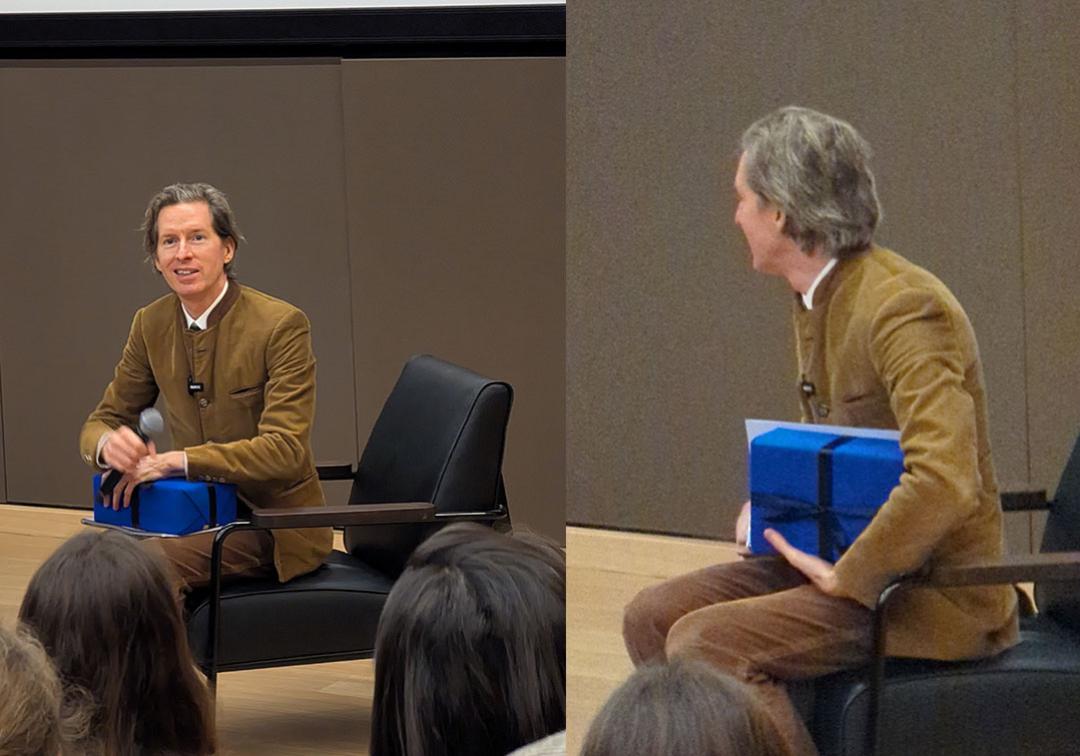Carla posing with puppets from Wes Anderson’s stop-motion animation film, Fantastic Mr Fox (2009).
(Photo credit: Carla Wright.
)
When UQ Honours…

Carla posing with puppets from Wes Anderson’s stop-motion animation film, Fantastic Mr Fox (2009).
(Photo credit: Carla Wright.
)
When UQ Honours…
Egi, M. et al. Hypoglycemia and outcome in critically ill patients. Mayo Clin. Proc. 85(3), 217–224 (2010).
Krinsley, J. S. & Grover, A. Severe hypoglycemia in critically ill patients: Risk…
LOS ANGELES, Dec. 18 (Xinhua) — U.S. academic journal Science on Thursday named the renewable energy surge as the 2025 Breakthrough of the Year, noting that this global transition is being led by China.
Since the Industrial Revolution, human society has run on ancient solar energy — captured by plants hundreds of millions of years ago, stored in fossil fuels, and dug and drilled from the earth, the journal said.
In 2025, however, a notable shift occurred as renewable energy, mostly generated from solar and wind sources, began to overtake conventional energy on multiple fronts, according to Science.
Renewable energy expanded rapidly enough to cover the entire increase in global electricity use in the first half of the year and surpassed coal as a source of electricity worldwide this year, it said.
“China’s mighty industrial engine is the driver. After years of patiently nurturing the sector through subsidies, China now dominates global production of renewable energy technologies,” Science said.
China makes 80 percent of the world’s solar cells, 70 percent of its wind turbines, and 70 percent of its lithium batteries, at prices no competitor can match, it said.
And solar panel imports in Africa and South Asia have soared, as people in those regions realized rooftop solar can cheaply power lights, cellphones and fans. To many, the continued growth of renewables now seems unstoppable — a prospect that has led Science to name the renewable energy surge its 2025 Breakthrough of the Year, according to the journal.
China’s burgeoning exports of green tech are transforming the rest of the world, too. Europe is a longtime customer, but countries in the Global South are also rushing to buy China’s solar panels, batteries and wind turbines, spurred by market forces and a desire for energy independence, the journal said.
This year renewables helped bring the growth of greenhouse emissions to a virtual standstill in China and put a global carbon peak within reach. But to meaningfully cut emissions, the world needs to treat the thresholds crossed this year as just a starting point, it said.
Other runner-up breakthroughs named by Science this year include custom gene editing, two new drugs for gonorrhea, a new type of telescope that can gather more optical data than all other telescopes, large language models applied to scientific research, and heat-tolerant rice. ■
LOS ANGELES, Dec. 18 (Xinhua) — U.S. academic journal Science on Thursday named the renewable energy surge as the 2025 Breakthrough of the Year, noting that this global transition is being led by China.
Since the Industrial Revolution, human society has run on ancient solar energy — captured by plants hundreds of millions of years ago, stored in fossil fuels, and dug and drilled from the earth, the journal said.
In 2025, however, a notable shift occurred as renewable energy, mostly generated from solar and wind sources, began to overtake conventional energy on multiple fronts, according to Science.
Renewable energy expanded rapidly enough to cover the entire increase in global electricity use in the first half of the year and surpassed coal as a source of electricity worldwide this year, it said.
“China’s mighty industrial engine is the driver. After years of patiently nurturing the sector through subsidies, China now dominates global production of renewable energy technologies,” Science said.
China makes 80 percent of the world’s solar cells, 70 percent of its wind turbines, and 70 percent of its lithium batteries, at prices no competitor can match, it said.
And solar panel imports in Africa and South Asia have soared, as people in those regions realized rooftop solar can cheaply power lights, cellphones and fans. To many, the continued growth of renewables now seems unstoppable — a prospect that has led Science to name the renewable energy surge its 2025 Breakthrough of the Year, according to the journal.
China’s burgeoning exports of green tech are transforming the rest of the world, too. Europe is a longtime customer, but countries in the Global South are also rushing to buy China’s solar panels, batteries and wind turbines, spurred by market forces and a desire for energy independence, the journal said.
This year renewables helped bring the growth of greenhouse emissions to a virtual standstill in China and put a global carbon peak within reach. But to meaningfully cut emissions, the world needs to treat the thresholds crossed this year as just a starting point, it said.
Other runner-up breakthroughs named by Science this year include custom gene editing, two new drugs for gonorrhea, a new type of telescope that can gather more optical data than all other telescopes, large language models applied to scientific research, and heat-tolerant rice. ■

Wausau is a place where creativity hums year-round. The city’s museums spark curiosity, its theaters set the stage for unforgettable performances and its artists welcome visitors into studios and…

President Donald Trump speaks during an address to the nation from the Diplomatic Reception Room at the White House,…

A solar park in Karachi, Pakistan. Image from Wikimedia Commons. License CC BY-SA 4.0.
This article was submitted as part of the Global Voices Climate Justice fellowship, which pairs journalists from Sinophone and Global Majority countries to…
